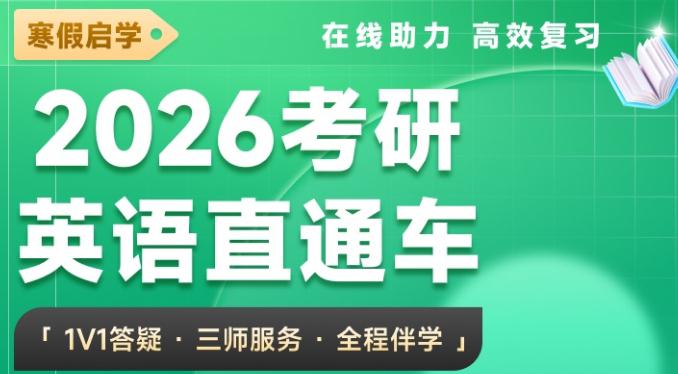1998-2022 ChinaKaoyan.com Network Studio. All Rights Reserved. 沪ICP备12018245号
武汉理工大学材料科学与工程学院研究生导师:向万春
一、姓名:向万春
二、基本情况:
1、出生年月:1983.1
2、学位:博士
3、职称:副研究员
4、工作院系:硅酸盐建筑材料国家重点实验室
三、教育经历(从大学开始):
2001-2005:陕西师范大学,理学学士
2005-2010:中国科学院化学研究所,理学博士
四、工作经历:
2010-2011:中国科学院西安光学精密机械研究所,助理研究员
2011-2014:澳大利亚莫纳什大学博士后
五、研究领域(不多于3个):
染料敏化太阳能电池
太阳能的有效利用是解决化石能源的日益枯竭及温室效应和环境污染等问题的重要途径之一。太阳能电池能实现无机械转化和污染副产品的情况下,把太阳能直接转化为电能,一直是研究热点。染料敏化太阳能电池由于其价格便宜、工艺简单、环境友好、形状多样化等优点而可能替代传统的硅基电池。染料敏化太阳能电池通常由在导电基底上的敏化纳晶多孔半导体作为工作电极,由铂等作为对电极,在两片电极中间由含有氧化还原电对的电解质构成。氧化还原电对在两片电极之间传输电子,同时在电子注入到半导体能带后使激发态染料得以再生。近年,腐蚀性低,吸光弱的基于联吡啶钴的电解质使得电解质的发展逐渐转向无碘电解质。我们已经成功将过渡金属(钴、锰等)配合物氧化还原电对用于染料敏化太阳能电池中并取得了优异的光电转换效率。通过对电解质进行凝胶固化,器件的稳定性得到了很大的提升。同时,我们采用水作为电解质溶剂来代替有毒的有机溶剂,获得了目前世界效率最高的水电解质染料敏化太阳能电池,这是制备环境友好的太阳能电池器件的一个重要途径。研究成果分别发表在能源与化学顶级期刊Energy & Environ. Sci.,Angew. Chem. In. Ed.,ChemSusChem等并被选为封面文章和热点文章进行报道。
钙钛矿太阳能电池
有机无机杂化钙钛矿太阳能电池自2012年起已在世界范围内进行广泛的研究,并被科学杂志选为2013年科学界十大突破之一。在这种新型全固态杂化太阳能电池中,具有ABX3晶型结构的有机-无机-卤素钙钛矿材料为吸光材料。A是有机阳离子,B是金属离子,X是卤素离子。这种三卤钙钛矿材料具有很宽的吸光范围(300-800 nm)和高摩尔吸光系数,因此,很薄的一层吸光层(~ 300 nm)就足以满足高效钙钛矿太阳能电池的要求。而提高钙钛矿太阳能电池光电转换效率和稳定性的方法在于材料的选择和工艺的优化。这种低成本和简单工艺的太阳能电池是光伏建筑一体化工程的重要组成部分。
六、科研项目(不多于5项):
水电解质pH值的调控及其对p型染料敏化太阳能电池光电性能的影响和机理研究,国家自然科学基金,25万,2016年1月-2018年12月,项目负责人
乙二胺钴水电解质在p-型染料敏化太阳能电池中的应用,武汉理工大学自主创新研究基金,5万,2015年1月-2016年12月,项目负责人
TiO2基粉体的制备、成形及其在光电领域的应用,硅酸盐建筑材料国家重点实验室自主研究课题,15万,2015年1月-2015年12月,项目负责人
七、代表性论文及著作(不多于10项):
1. Wanchun Xiang, Fuzhi Huang,Yi-Bing Cheng, Udo Bach and Leone Spiccia, Energy Environ. Sci., 2013, 6,121-127. (封面文章和热点文章)
2. Wanchun Xiang, Akhil Gupta,Muhammad Kalim Kashif, Ante Bilic,Richard A. Evans, Leone Spicciaand Udo Bach, ChemSusChem, 2013, 6,256-260.
3. Wanchun Xiang, WenchaoHuang, Udo Bach and Leone Spiccia, Chem. Commun.,2013, 49, 8997-8999.
4. Wanchun Xiang,Yanyan Fang, Shibi Fang, Yuan Lin, Electrochimica Acta, 2011,56,1605-1610.
5. Wanchun Xiang,Dehong Chen, Rachel A. Caruso, Yibing Cheng, Udo Bach and Leone Spiccia, ChemSusChem,2015, 8, 3704- 3711.
6. Cunku Dong, Wanchun Xiang,Fuzhi Huang, Dongchuan Fu, Udo Bach, Yi-Bing Cheng, Xin Li and Leone Spiccia, Angew.Chem. Int. Ed., 2014, 53, 6933-6937
7. Cunku Dong, Wanchun Xiang, Fuzhi Huang, Dongchuan Fu, Wenchao Huang, Udo Bach,Yi-Bing Cheng Leone Spiccia and Xin Li, Nanoscale, 2014, 6, 3704-3711.
8. YangChen, Fuzhi Huang, Wanchun Xiang,Dehong Chen, Lu Cao, Leone Spiccia, Rachel A. Caruso and Yi-Bing Cheng,Nanoscale,, 2014, 6, 13787–13794
9. Jeremiah Toster, K. Swaminathan Iyer, Wanchun Xiang, Federico Rosei, Leone Spiccia and Colin L. Raston, Nanoscale,2013, 5, 873-876.
10. Yujian Huang, Wanchun Xiang, Xiaowen Zhou, Yuan Lin, Shibi Fang, Electrochimica Acta, 2013, 89, 29-34.
八、联系方式:
1、E-mail:xiangwanchun@whut.edu.cn
2、工作地址(实验室):武汉理工大学东院硅酸盐建筑材料国家重点实验室南楼600室
二、 Name:Wanchun Xiang
二、Brief introduction:
1、Date of Birth: 1983.1
2、Degree:PhD
3、Title:Associate Professor
4、Working department:State Key Laboratory of Silicate Materials for Architectures
三、Education experience :
B.S. in Chemistry, Shaanxi Normal University, China, 2005
PhD in Chemistry, Institute of Chemistry, Chinese Academy of Sciences, China, 2010
四、Working ecperience:
2010-2011:Xi’An Institute of Optics and Precision Mechanics, Chinese Academy of Sciences,China, Assistant Professor
2011-2014:Monash University, Australia, Research Fellow
五、Research field (no more than 3)
Due to the gradual depletion of fossil fuels and the increasing energy demand to support the current model of economic growth,mankind is facing a global energy problem. Amongst the number of alternative resources, renewable energies are rapidly becoming the leading solution to fulfill the growing needs of power sources. At present, solar energy is considered the most promising renewable resource. A simple calculation leads self-evidently to the conclusion that covering only around 0.1% of the earth’s surface by means of energy conversion devices having an efficiency of about 10% would satisfy the present global energy needs. These encouraging numbers are inducing the scientific community to make even greater efforts towards the direction of improving solar energy conversion technologies as well as proposing new intriguing solutions.
Dye-sensitized solar cells
Dye-sensitized solar cells (DSCs) have been intensely studied as promising renewable energy technology with the potential to achieve high energy conversion efficiencies at low cost. DSCs typically consist of a sensitized mesoporous semiconductor film on a conductive substrate as working electrode and a platinized counter electrode, bridged by an electrolyte film containing the reduced and oxidized forms of the redox mediator. The latter mediates charge transport between the two electrodes and is also responsible for the regeneration of the photooxidized dye, following electron injection into the TiO2. The application of a cobalt(II)/(III) tris(bipyridine) based electrolyte has recently resulted in a benchmark efficiency of >12%. This result has accelerated the transition to non-iodide based electrolytes, which are less corrosive and exhibit weaker absorption of visible light. Transition metal, such as cobalt, iron and manganese based redox couple have been successfully developed and promising efficiencies were obtained in both n-type and p-type DSCs. By solidifying the electrolyte, the stability of the devices can be further improved. More mportantly, the replacement of organic solvent in the electrolyte with water paves the way for environmentally friendly devices, which keeps us in the leading role in this area worldwide. These breakthroughs were published on Energy & Environ.Sci. and Angew. Chem. In. Ed., and one of them was selected as the front-cover and hot article.
Perovskite solar cells
Alkylammonium lead(II) halides ([CH3NH3PbX3]n) have been shown to be efficient photovoltaic materials with excellent light harvesting, high carrier mobility, and facile solution processability. A rapid growth of intensive research into this photovoltaic technology since 2012 has resulted in a certified energy conversion efficiency over 20% and the topic has been selected as one of the top 10 breakthroughs of 2013 as announced by the journal Science.These organic– inorganic lead(II) complexes crystallize in the well-known perovskite structure with general formula ABX3, where A is an organic cation, Bis a metal, and X is a halide. A very thin perovskite film (~ 300 nm) is sufficient enough for highly-performed perovskite solar cell due to its broad light absorption range from 300 to 800 nm and a high molar extinction coefficient. Materials selection and process optimization are essential to high performance of perovskite solar cells with long-term stability. This new type of solar cells with low cost and easy fabrication is the key part of the building integrated photovoltaics (BIPV).
六、Research project(no more than 5)
The effect of pH on the performance of p-type dye-sensitized solar cells. National Science Fund of China, 0.25 million. Jan. 2016- Dec. 2018. Project Leader
The application of cobalt ethylenediamine into p-type dye-sensitized solar cells. 5,0000 CNY, Wuhan University of Technology, Jan. 2015-Dec. 2016. Project Leader
The preparation, formation and application of TiO2-based particles. State Key Laboratory of Silicate Materials for Architectures, Wuhan University of Technology, Jan.2015- Dec. 2015, Project Leader
七、Representative papers and works
1. Wanchun Xiang, Fuzhi Huang,Yi-Bing Cheng, Udo Bach and Leone Spiccia, Energy Environ. Sci., 2013, 6,121-127. (front cover and hot article)
2. Wanchun Xiang, Akhil Gupta,Muhammad Kalim Kashif, Ante Bilic,Richard A. Evans, Leone Spicciaand Udo Bach, ChemSusChem, 2013, 6,256-260.
3. Wanchun Xiang, Wenchao Huang, Udo Bach and Leone Spiccia, Chem. Commun.,2013, 49, 8997-8999.
4. Wanchun Xiang, Yanyan Fang, Shibi Fang, Yuan Lin, Electrochimica Acta,2011,56,1605-1610.
5. Wanchun Xiang, Dehong Chen, Rachel A. Caruso, Yibing Cheng, Udo Bach and Leone Spiccia, ChemSusChem, 2015, 8, 3704- 3711.
6. Cunku Dong, Wanchun Xiang, Fuzhi Huang, Dongchuan Fu, Udo Bach, Yi-Bing Cheng, Xin Li and Leone Spiccia, Angew. Chem. Int. Ed.,2014, 53, 6933-6937
7. Cunku Dong, Wanchun Xiang, Fuzhi Huang, Dongchuan Fu, Wenchao Huang, Udo Bach, Yi-Bing Cheng Leone Spiccia and Xin Li, Nanoscale, 2014, 6, 3704-3711.
8. Yang Chen, Fuzhi Huang, Wanchun Xiang, Dehong Chen, Lu Cao, Leone Spiccia, Rachel A. Caruso and Yi-Bing Cheng,Nanoscale,, 2014, 6, 13787–13794
9. Jeremiah Toster, K. Swaminathan Iyer, Wanchun Xiang, Federico Rosei, Leone Spiccia and Colin L. Raston,Nanoscale, 2013, 5, 873-876.
10. Yujian Huang, Wanchun Xiang, Xiaowen Zhou, Yuan Lin,Shibi Fang, Electrochimica Acta, 2013, 89, 29-34.
八、Contact information :
1、E-mail:xiangwanchun@whut.edu.cn
2、Office:Room 600, South Building, State Key Laboratory of Silicate Materials for Architectures Wuhan University of Technology No.122 Luoshi Rd, Wuhan, China
来源未注明“中国完美·体育(中国)官方网站,WANMEI SPORTS网”的资讯、文章等均为转载,本网站转载出于传递更多信息之目的,并不意味着赞同其观点或证实其内容的真实性,如涉及版权问题,请联系本站管理员予以更改或删除。如其他媒体、网站或个人从本网站下载使用,必须保留本网站注明的"稿件来源",并自负版权等法律责任。
来源注明“中国完美·体育(中国)官方网站,WANMEI SPORTS网”的文章,若需转载请联系管理员获得相应许可。
联系方式:chinakaoyankefu@163.com
- 2026完美·体育(中国)官方网站,WANMEI SPORTS英语全程班 寒假班
- 权威高配师资亲授技巧,教研千锤百炼科学提分。直录播课相结合精讲互动二合一,专业团队精细化作文批改。讲练结合,随学随练稳步提升。支持试听~
- 主讲团队:王江涛、谭剑波、董仲蠡、许聪杰、陈志超、潘赟、郑艳彤、易熙人
- 武汉理工大学完美·体育(中国)官方网站,WANMEI SPORTS分数线
- 武汉理工大学报录情况
- 武汉理工大学专业课复习资料
- 武汉理工大学历年完美·体育(中国)官方网站,WANMEI SPORTS下载
- 武汉理工大学研究生院
- 2026完美·体育(中国)官方网站,WANMEI SPORTS英语全程班 早鸟2班
- 2026完美·体育(中国)官方网站,WANMEI SPORTS政治全程班 早鸟2班
- 2026完美·体育(中国)官方网站,WANMEI SPORTS数学全程班 早鸟2班
- 2026完美·体育(中国)官方网站,WANMEI SPORTS英语直通车 长线1期
- 2026完美·体育(中国)官方网站,WANMEI SPORTS政治直通车 长线1期
- 2026完美·体育(中国)官方网站,WANMEI SPORTS数学直通车 长线1期
- 2026完美·体育(中国)官方网站,WANMEI SPORTS英语全程班 寒假班
- 2026完美·体育(中国)官方网站,WANMEI SPORTS政治全程班 寒假班
- 2026完美·体育(中国)官方网站,WANMEI SPORTS数学全程班 寒假班
- 山东大学432统计学全套完美·体育(中国)官方网站,WANMEI SPORTS资料
- 山东科技大学817管理学完美·体育(中国)官方网站,WANMEI SPORTS资料
- 浙江师范大学936物理化学完美·体育(中国)官方网站,WANMEI SPORTS复习资
- 浙江大学855环境学完美·体育(中国)官方网站,WANMEI SPORTS复习资料
- 大连理工大学333教育综合完美·体育(中国)官方网站,WANMEI SPORTS复习资
- 沈阳大学346体育综合完美·体育(中国)官方网站,WANMEI SPORTS复习资料
- 大连大学848传热完美·体育(中国)官方网站,WANMEI SPORTS复习资料
- 大连民族大学338生物化学完美·体育(中国)官方网站,WANMEI SPORTS复习资料

扫码关注
了解完美·体育(中国)官方网站,WANMEI SPORTS最新消息












